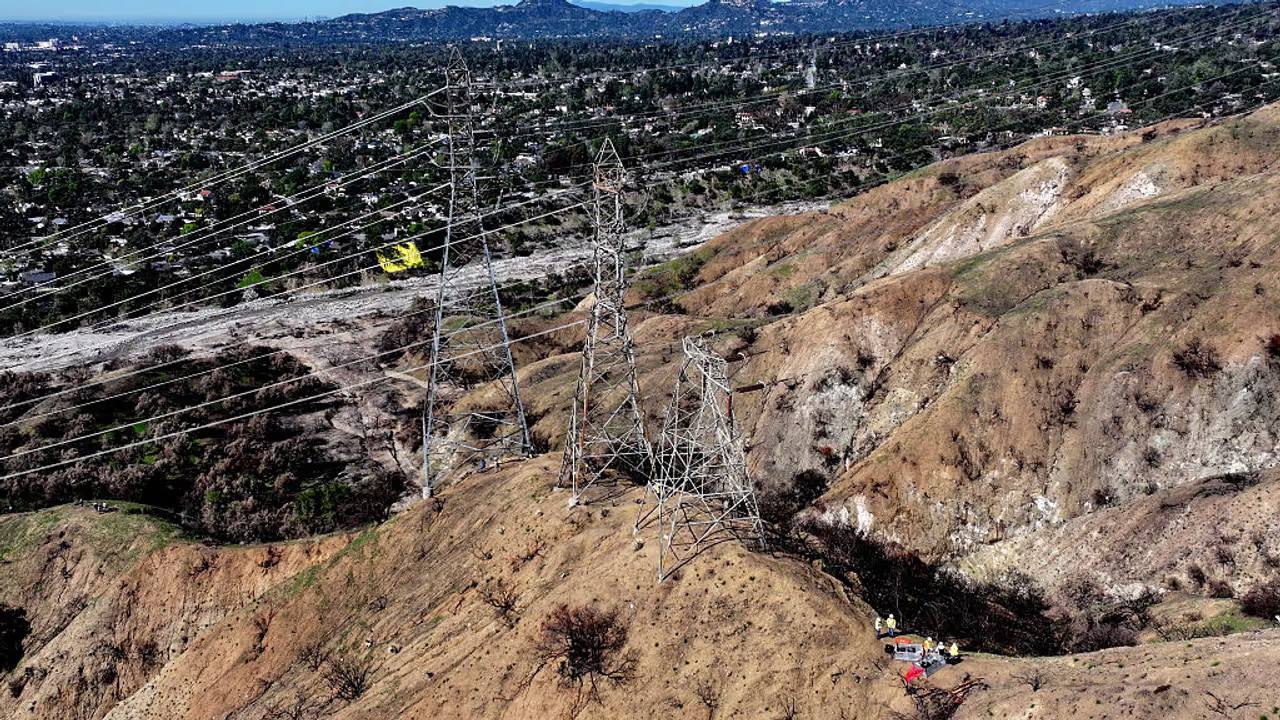A shocking report has revealed the 'sitting duck' cities most vulnerable to climate disasters.
A shocking report has revealed the 'sitting duck' cities most vulnerable to climate disasters. The report, produced by the Financial Times, warns that Amsterdam, Houston, and New York City are at risk of being battered by flooding, while Austin is at high risk of deadly infernos.

Meanwhile, several densely populated cities - Lisbon, Naples, Athens, and Christchurch—are caught in a dual-threat scenario, at risk of both heatwaves and flooding.
“But at the global level, they are becoming more probable,” said Guillermo Rein, fire sciences professor at Imperial College London. “In the next year there's going to be a big wildfire destroying a big community. But we have absolutely no idea where that is going to happen.”
Experts believe that some of these cities have been skating on thin ice, their near misses offering a temporary illusion of safety. With hazardous terrain, volatile climates, and poor urban planning coalescing into a perfect storm, these urban giants are standing on a climate powder keg.
Take Athens, for instance. In August 2024, the ancient city of 3.6 million people narrowly avoided incineration when flames engulfed 40 square miles of land just northeast of the capital. One woman lost her life, thousands fled in terror—but a tragic inferno in the city center was only averted by sheer meteorological fortune.
“What was missing was the wind element,” explained Dr. Thomas Smith, environmental geography expert from the London School of Economics and Political Science. “Had there been strong winds, like the Santa Ana winds which drove the LA wildfires, the situation might have been far more severe.”
Urban sprawl is making matters worse
As cities expand into grasslands, woodlands, and farmlands, they enter the perilous wildland-urban interface—a danger zone that covers 4.7% of Earth’s surface. In Europe alone, this combustible border spans 15% of the continent and houses more than 60% of the population.
Cities like Lisbon, Naples, and Athens lie deep within this hazard zone, their fates increasingly bound to climate volatility. While climate change isn't the spark that ignites wildfires, it creates the perfect tinderbox—dry vegetation, sweltering heat, and powerful winds.
The World Weather Attribution group recently warned that the kind of scorching, windy conditions that turned Los Angeles into an inferno are now 35% more likely due to global warming.
The UK offers a haunting example. In the first four months of 2025 alone, over 113 square miles (29,200 hectares) of land have burned—shattering wildfire records.
A financial risk assessment by Moody’s reveals that 2.4 billion people now reside in areas at high risk of inland or flash flooding. In the United States, cities such as Dallas, Houston, Washington DC, New York, and Sacramento are all staring down escalating flood threats, fueled by an unforgiving climate.
Dallas, in particular, finds itself drowning in risk. Rapid urban expansion has sealed vast surfaces in concrete and asphalt—materials that repel water and intensify flash floods. When a torrential 38 cm of rain fell in a single day in 2022, homes were submerged and cars swept away.
Other cities treading floodwater peril include Amsterdam, Ahmedabad, and Buenos Aires.
Climate change, again, is the intensifier. Following calamitous floods in Valencia last year, scientists reached a grim conclusion.
“No doubt about it, these explosive downpours were intensified by climate change,” declared Dr. Friederike Otto, head of the World Weather Attribution at Imperial College London.
Even more sinister is the dual-threat: cities like Lisbon, Athens, Naples, Cape Town, Sydney, and Christchurch are now sitting ducks for both wildfires and floods.
Wildfires ravage vegetation, stripping the land of its ability to absorb water. The result? Charred landscapes become prime targets for flash floods if storms follow. Some studies suggest this heightened flood risk can persist for up to a decade after a fire.
To make matters worse, many cities are being whiplashed between extreme drought and sudden deluges—what scientists now call “climate whiplash.” With increasingly erratic wet and dry spells, cities like Dallas face mounting disasters with diminishing time to prepare.


